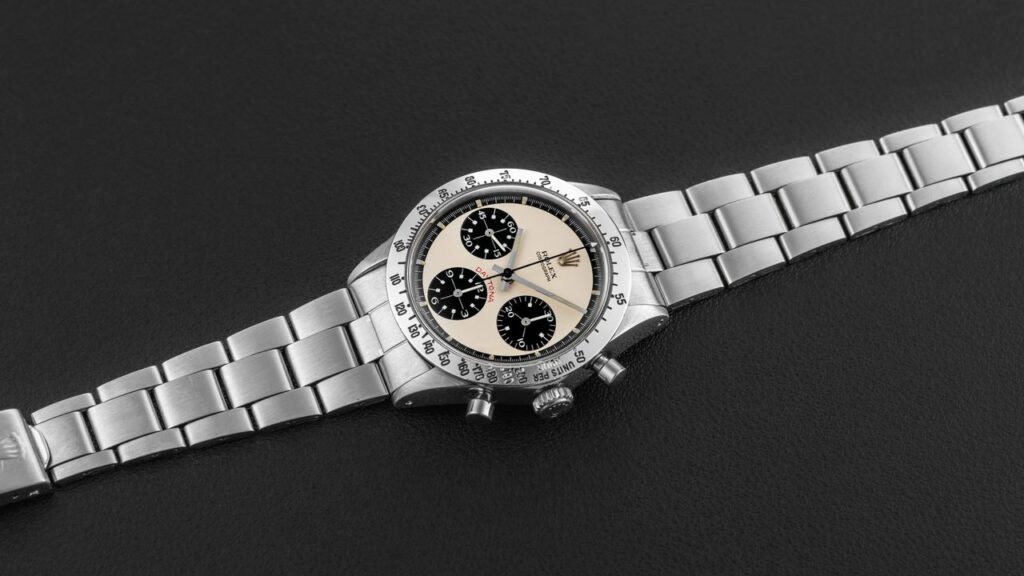This is an edition of the newsletter Box + Papers, Cam Wolf’s weekly deep dive into the world of watches. Sign up here.
Last Thursday, Adam Golden, the Miami-based watch dealer behind Menta Watches, got in his car and drove an hour and a half north to Boca Raton. Given what was waiting for him there, the prolonged travel hardly felt like a bother—Golden, in fact, has traveled far greater distances for similar bounty. The grail he ventured out to claim? A practically untouched version of the most important vintage watch in the world: the Rolex “Paul Newman” Daytona.
Over the past few years, the watch industry has undergone more change than the Tadao Ando house that Kanye West once owned. The pandemic sent watch prices skyrocketing before they crashed back down to earth; Cartier emerged as the toast of the industry; tiny watches butted their way into the zeitgeist; independent watchmakers began hogging even more of the oxygen in the room; and now, of course, tariffs are threatening to send the entire watch world toppling down. Throughout it all, the Rolex “Paul Newman” Daytona has remained the one constant in the otherwise topsy-turvy vintage watch market, firmly planted in its throne as the most desirable and stable-priced timepiece on the planet.
So what sets the “Paul Newman” version of Rolex’s venerable chronograph apart from a “normal” one? The main thing is what’s called an “exotic” dial, which features an outer minute track in a contrasting color (regular Daytona dials are all one solid hue). Other distinguishing features include art-deco style numerals, blocky indices, and usually a tri-color dial (typically, but not exclusively, some combo of white, black, and red). The watch takes its nickname, of course, from the legendary Hollywood star Paul Newman, who wore this variation of the watch. In 2017, actor’s actual Daytona sold for $17.8 million—it’s still the most ever paid for a vintage wristwatch at auction.
That record-breaking transaction was a culmination of the watch’s journey, not the spark plug. The watches have been highly sought-after by collectors since the ’80s, according to Paul Boutros, Phillips’ deputy chairman and head of watches in the Americas. “That’s one of the reasons why the Paul Newman did so well,” he says, “because the Paul Newman Daytonas really helped get wristwatch collecting off the ground in the 1980s.” Some 40 years later, and the watch is still as desirable as ever.
Very few watches remain as steadily in-demand as the PND. “What else would I consider immune to trends? I can think of swings [in market value] for literally everything, whether it’s a F.P.Journe, a Heuer, a Cartier, or this or that,” Golden says. “You saw the rise and fall of the integrated sports model watches, which everybody assumed were blue chip, like the [Audemars Piguet] Royal Oak and the [Patek Philippe] Nautilus.” Boutros points to Patek’s perpetual calendar chronographs as another example of watches that never seems to dip in relevance. But really, the best comparison might come from the world of cars: The PND, Boutros says, is like the Porsche 911 of the watch industry. (Both the Daytona and the 911 just happened to debut in 1963.)



